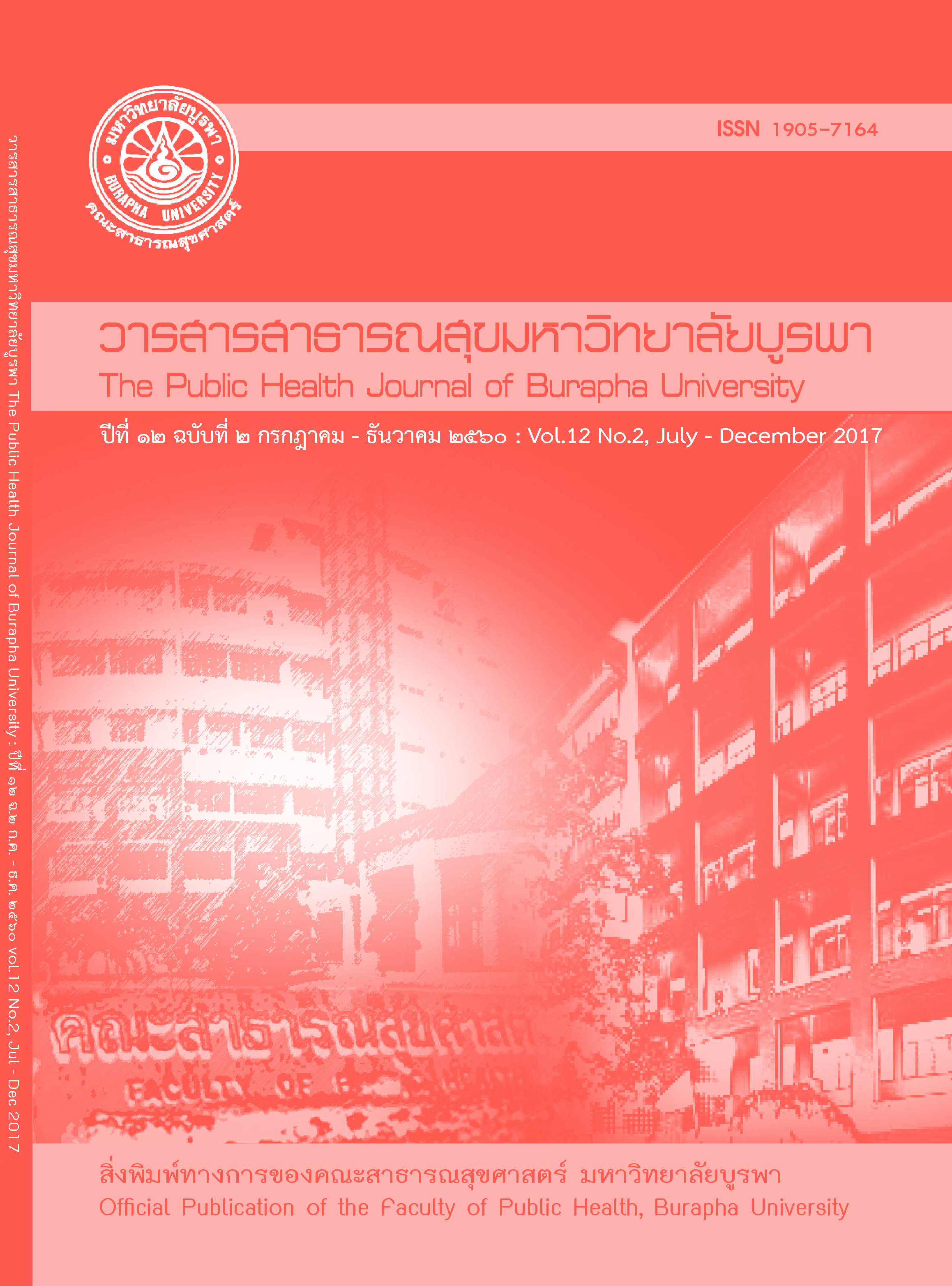รูปแบบการดำเนินงานและการเฝ้าระวังโรคพิษสุนัขบ้าในชุมชน เพื่อให้เป็นเขตพื้นที่ปลอดโรค อำเภอเมืองบึงกาฬ จังหวัดบึงกาฬ
Main Article Content
บทคัดย่อ
รูปแบบการดำเนินงานและการเฝ้าระวังโรคพิษสุนัขบ้าในชุมชน เพื่อให้เป็นเขตพื้นที่ปลอดโรค อำเภอเมืองบึงกาฬ จังหวัดบึงกาฬ
The development model for rabies implemented surveillance in the community to rabies free zone in Meungbuengkan district, Buengkan province.
หทัยกาญจน์ ยางศรี
คณะสาธารณสุขศาสตร์ มหาวิทยาลัยมหาสารคาม จังหวัดมหาสารคาม
Hathaikan Yangsri
Faculty of Public Health, Mahasarakham University, Mahasarakham Province
บทคัดย่อ
การวิจัยครั้งนี้เป็นการวิจัยเชิงปฏิบัติการมีความมุ่งหมายเพื่อศึกษารูปแบบการดำเนินงานและการเฝ้าระวังโรคพิษสุนัขบ้าในชุมชน เพื่อให้เป็นเขตพื้นที่ปลอดโรค อำเภอเมืองบึงกาฬ จังหวัดบึงกาฬ คัดเลือกกลุ่มเป้าหมายจากเครือข่ายผู้มีส่วนเกี่ยวของ จำนวน 64 คน โดยวิธีการสุ่มแบบเจาะจง ประยุกต์แนวคิดวิจัยเชิงปฏิบัติการแบบมีส่วนร่วมในกระบวนการพัฒนา เก็บข้อมูลโดยใช้แบบสอบถาม แบบบันทึกการประชุมกลุ่ม วิเคราะห์ข้อมูลโดยใช้ร้อยละ ค่าเฉลี่ย
ผลการวิจัยดำเนินงานและการเฝ้าระวังโรคพิษสุนัขบ้าในชุมชน เพื่อให้เป็นเขตพื้นที่ปลอดโรค อำเภอเมืองบึงกาฬ จังหวัดบึงกาฬ การดำเนินงานตามกระบวนการวิจัยได้แผนงานกิจกรรมที่ต้องดำเนินการร่วมกัน 5 กิจกรรม คือ การเฝ้าระวังโรคพิษสุนัขบ้าในคน การเฝ้าระวังโรคพิษสุนัขบ้าในสัตว์ การสำรวจสัตว์พาหะนำโรคพิษสุนัขบ้า การฉีดวัคซีนป้องกันโรคพิษสุนัขบ้าในสัตว์ การควบคุมจำนวน จากการดำเนินกิจกรรมตามกระบวนการวิจัยพบว่าภาคีเครือข่ายมีการบูรณาการความร่วมมืออย่างมีส่วนร่วม ทั้ง 3 หน่วยงานหลัก ได้แก่ หน่วยงานปศุสัตว์ สาธารณสุข และองค์กรปกครองส่วนท้องถิ่น ทำให้ได้รูปแบบการดำเนินงานที่เรียกว่า รูปแบบการดำเนินงานโรคพิษสุนัขบ้าไตรภาคี Rabies Fee Zone การวิเคราะห์ปัจจัยแห่งความสำเร็จและถอดบทเรียน พบว่ามีปัจจัยแห่งความสำเร็จ คือ การมีส่วนร่วม การบูรณาการการทำงานร่วมกันระหว่างภาคีเครือข่าย การประสานงาน และการดำเนินการอย่างเป็นระบบต่อเนื่อง
คำสำคัญ : เขตพื้นที่ปลอดโรคพิศสุนัขบ้า, การเฝ้าระวังโรคพิษสุนัขบ้า,โรคพิษสุนัขบ้า
Abstract
This action research was aimed to develop a model to implement surveillance in the community to become a rabies free zone in Meungbuengkan district, Buengkan province. The 64 participants were selected from community leaders in various village groups. Concepts applied were participatory action research and development process. Data was collected by questionnaire and focus group technique. The data wasanalyzed using percentage, mean, standard deviation. The results of the research and development model included five planned events: 1) surveillance of rabies in people 2) Surveillance of rabies in animals 3) exploring animal-borne rabies 4) vaccination against rabies in animals 5) control of dogs. The style of the original is the only agency to integrating the contributions of partners after the operation, according to the researchers found that partners are integrated partnership contributed. Together, the three major agencies, including livestock, health and local government agencies as well as representatives of the people. It was the so-called new. Modes of operation and surveillance tripartite rabies Rabies Fee Zone the key success factors were the implementation and monitoring of rabies.The continuation of surveillance to achieve a disease-free zone. To continue collaboration between the partners of the three major agencies, including local governments and public health livestock agencies Community leaders have implemented a system to achieve smooth operations and links. The operation is ongoing.
Keywords: Rabies free area, Rabies surveillance, Rabies
